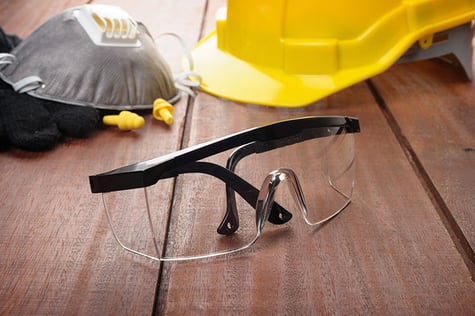 Rooftops are inherently dangerous places. The reports are out there: Falls from high places are one of the most common accidents in the workplace. These falls can also be extremely costly. According to OSHA, the incurred claims costs of falls from elevation average approximately $54 million per year. Medical care accounted for roughly 2/3 of those benefits.
Rooftops are inherently dangerous places. The reports are out there: Falls from high places are one of the most common accidents in the workplace. These falls can also be extremely costly. According to OSHA, the incurred claims costs of falls from elevation average approximately $54 million per year. Medical care accounted for roughly 2/3 of those benefits.
In short, falls are always bad news. The good news is that there’s a lot you can do to optimize roof safety, protecting both your workers and your capital assets. The first step is to identify the primary causes of falls as well as what you can do to minimize the risk.
1. Cause: Weather
The weather can cause a host of problems, like the slippery, wet, or icy roofs, snow accumulation, dangerously hot temperatures, and heavy winds. Any of these conditions can definitely increase the chance of a fall, and even more so when they’re present in combination.
Solution: Be prepared for any weather condition by making your roof safe and able to withstand the climate in which it exists. Make sure there are clear, safe paths for workers to use when accessing the roof, and eliminate non-essential roof access during hazardous conditions. A thunderstorm isn’t the time to be performing routine maintenance!
2. Cause: Poor Access for Maintenance
Roof construction that requires maintenance workers to crawl up and over piping, move around and under ductwork, and use poorly built steps increases the risk of falls. So does a roof construction that requires workers to operate too close to the edge of the roof.
Solution: The roof becomes a far more dangerous place when workers have to navigate a veritable obstacle course to reach the equipment and structures they need to repair. A roof walkway, thoughtfully laid out and incorporating handrails, ramps and stairways as appropriate, will drastically increase roof safety and extend the life of your roof.
3. Cause: The Roof Itself
The construction of the roof itself can impact roof safety. A steep roof is more difficult for workers to navigate. On the other hand, a flat roof can accumulate rain or snow, increasing the risk of slips. An old, weak roof is more likely to break under foot traffic, which can also result in worker injury.
Solution: Platforms with handrails can increase roof safety on sloped roofs and can reduce the risk of slipping on flat roofs. In addition, business owners are responsible for maintaining their roofs in a manner that promotes worker safety.
4. Cause: Lack of Training
Poorly trained workers sometimes underestimate the risks inherent in working on a roof and may not follow standard safety precautions.
Solution: OSHA requires employers to “provide a training program for each worker who might be exposed to fall hazards. The program shall enable each worker to recognize the hazards of falling and shall train each worker in the procedures to be followed in order to minimize these hazards.” Make sure your employees know how to recognize an unsafe situation and then how to work with it. Knowledge is safety.
Roof safety is the employer’s responsibility. It may not be possible to completely eliminate the risks inherent in working on rooftops, but employing these proven safeguards will help you create the safest environment possible.





